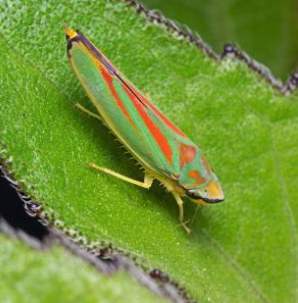This website uses cookies so that we can provide you with the best user experience possible. Cookie information is stored in your browser and performs functions such as recognising you when you return to our website and helping our team to understand which sections of the website you find most interesting and useful.
Bug bomb infests four in five Beaujolais vineyards
An insect-borne disease has hit more than 80% of villages in Beaujolais, with producers forced to rip out vines.

Having been battered by severe hailstorms four times during a critical time in the growing cycle last June, wine producers in Beaujolais are now faced with losing whole plots of vines due to an aggressive disease affecting the plants.
Known as flavescence dorée, the disease is spread by leafhopper insects, which suck sap from the vines. It is thought that the pestilence has been able to spread more easily due to the high number of untreated vineyards in Beaujolais — flavescence dorée can be prevented using an insecticide, and applying it is mandatory in the region, but some organic winegrowers are reluctant to spray, despite the product being approved for organic grape production.
Their reasoning is that the product will kill other ‘good’ insects in addition to the leafhoppers they are targeting.
In 2015 an organic winegrower was summoned to court for refusing to comply with an official order to spray his vines. Thibault Liger-Belair argued that other insects that belong to the delicate eco system he had carefully built up in his vineyard would be killed by the insecticide, called Pyrévert.
Abandoned plots have been blamed for the current epidemic, as leafhoppers feasting on neglected and disused vineyards can easily infect neighbouring plots. Authorities have repeatedly asked landowners to destroy or treat abandoned vines, but many still remain.
Seventeen plots have had to be destroyed so far this year, and now four in five vineyard owners are weighing up whether to pull out their vines.
In the event of the uprooting of entire plots, winegrowers can claim compensation via the National Agricultural Fund for Mutualization of Health and Environmental Risks (FMSE).
It’s been a tough few years for the Beaujolais region with wine sales nosediving in its biggest export market, Japan, due to soaring transportation costs.
In July 2022, Suntory Holdings cut its core range of 15 Beaujolais wines down to just three, and ramped up the price of these by a whopping 40%.
During the past 20 years, the total area under vine in Beaujolais has declined from around 55,000 acres to 34,000.

